Scrawled with chalk on a small blackboard in Maharashtra, India, there was a list of items available at the small restaurant where I took shelter to escape from the sweltering midday heat.
"Kokum Sherbet Rs 25 [£0.24]", the blackboard read.
The deep red sherbet (a traditional Indian beverage prepared with fruits and spices) almost instantly relieved me of my thirst and exhaustion. My drink was made from the fruit of kokum, a tropical evergreen tree from the mangosteen family that's indigenous to Konkan, a western coastal belt of land that extends from Maharashtra to the states of Goa and Karnataka.
An important ingredient in the local cuisine for its acidic properties, kokum is to Konkan as sweet-sour tamarind is to the southern states of India. But in addition to offering a great tangy flavour, it also has a rehydrating effect in drinks like sherbet (see recipe below), which have been used traditionally to help keep heatstroke at bay. Turning to such traditional knowledge now might just provide a healthy – and delicious – option when trying to counter the woes of the current spate of heatwaves around the globe.
"For centuries, the tribal communities have used agal, or the extract from the [kokum] fruit, as a souring and colouring agent in curries, gravies and fish preparations," said food historian Kurush Dalal. "They have also utilised it for medicinal properties."
According to Ayurveda – India's ancient natural system of medicine, deriving from the Sanskrit words ayur (life) and veda (knowledge) – the kokum fruit has many medicinal uses and health benefits. A storehouse of antioxidants, B-complex vitamins, magnesium and potassium, kokum can be used as a digestive tonic and as a treatment for flatulence, diarrhoea, sores and skin rashes.
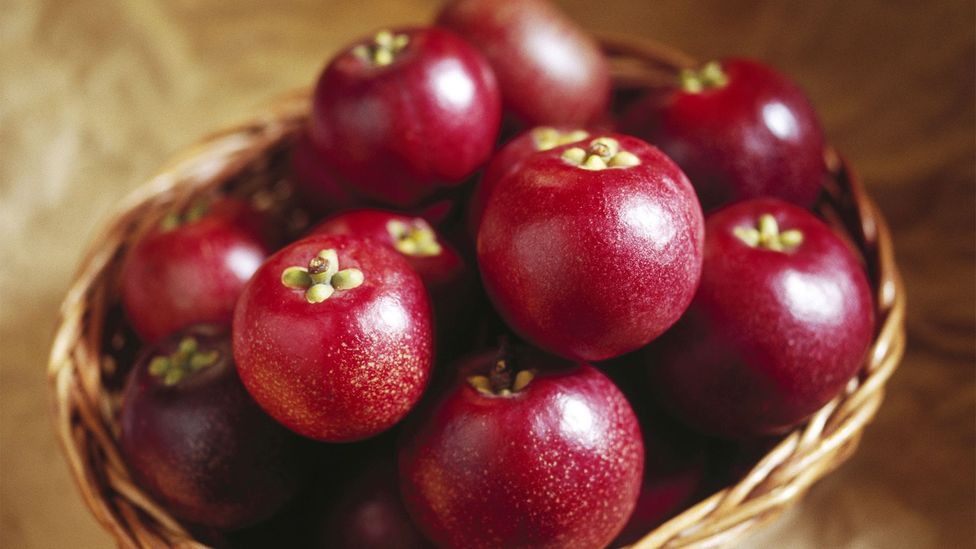
Though used extensively by locals, kokum has been cultivated only on a small scale (Credit: Dinodia Photos/Alamy)
"It is traditionally also considered to be a natural coolant and helpful in beating the summer heat," said Dalal.
"Kokum, rich in essential vitamins and minerals, makes for an excellent electrolyte-balancing drink on mixing with some sugar and water," explained Dr Trupti Bhole, professor at Bhartiya Vidyapeeth Ayurveda College in Pune. "It prevents dehydration and dryness due to summer heat."
Konkanis consume it in extract form in refreshing and energising drinks like the kokum sherbet I had (which was also mixed with roasted cumin powder and sugar), as well as solkadhi (see recipe below), a rich, pink-coloured beverage that's made by blending kokum extract and coconut milk.
The rain-fed kokum tree flowers in March and its red-purple fruits are harvested around April and May. After picking, the fibrous rind of the ripe, lemon-sized berry is separated from its large seeds and is sundried for six to eight days, causing the rind to turn almost black. The dried rind is then boiled in water and reduced to make a concentrate or turned into a syrup with the addition of sugar for use in drinks or dishes. The oil from seeds, known as kokum butter, makes for a natural emollient that is utilised as a base for cosmetic products.
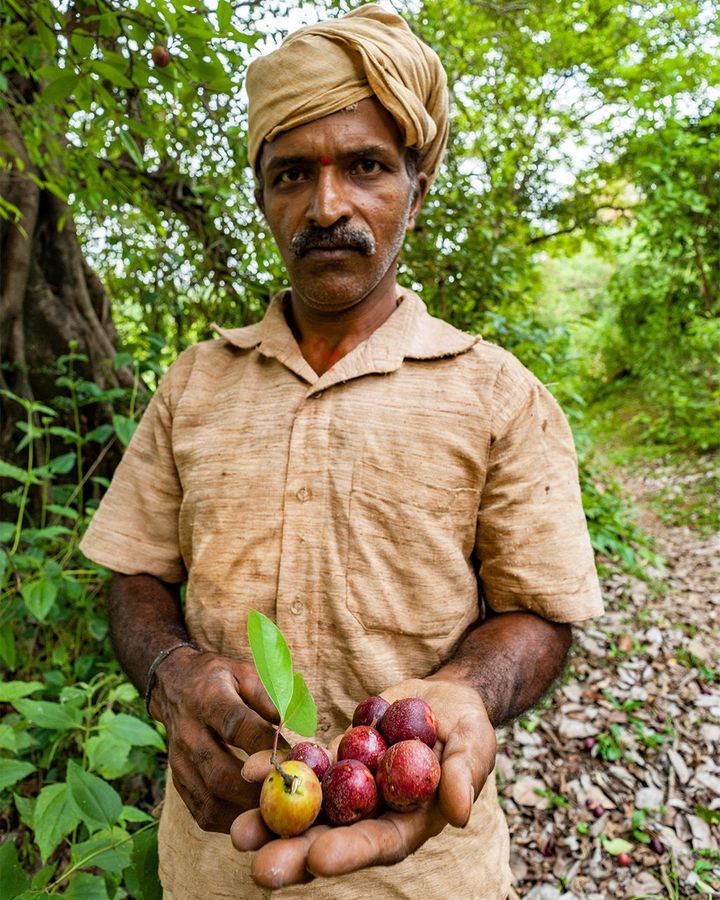
Red-purple kokum fruits are harvested around April and May (Credit: Dinodia Photos/Alamy)
Though kokum is used extensively by locals, it's been cultivated only on a small scale, mostly on plantations also growing mango and coconut. A survey conducted in 2010 showed only 1,000 hectares of kokum planted in Konkan. However, with an increasing demand for kokum butter, the local forest department is gradually planting more trees along the roadsides and in forested areas.
And now, the fruit is finding its way into the culinary spotlight as well, from small, local eateries to more high-end restaurants across India.
"Not much attention was given for its cultivation initially; however, it is getting its due gradually," said Dalal. "What grew wild and was used as an ingredient in home cooking mostly is now becoming gourmet. Chefs are experimenting with the sourness and rich colour of kokum."
Goa Portuguesa, an award-winning resto-bar started in 1988 in Mumbai with a newer location in Dubai, offers Goan and Portuguese delicacies utilising kokum. "Kokum is used very often in Goan food. Our restaurant has kokum in pickles, jams and chutneys besides the traditional dishes like solkadi [a cold coconut milk and kokum soup], seafood sukke [clams and prawns cooked in a thick coconut and kokum gravy], mushroom xacuti [mushrooms cooked in a kokum-coconut gravy] or shark ambottik [shark cooked in tangy coconut-kokum gravy]," said chef-owner Deepa Awchat. "The kokum gives beautiful colour to the thick coconut gravy and its sourness subdues the typical seafood odour."
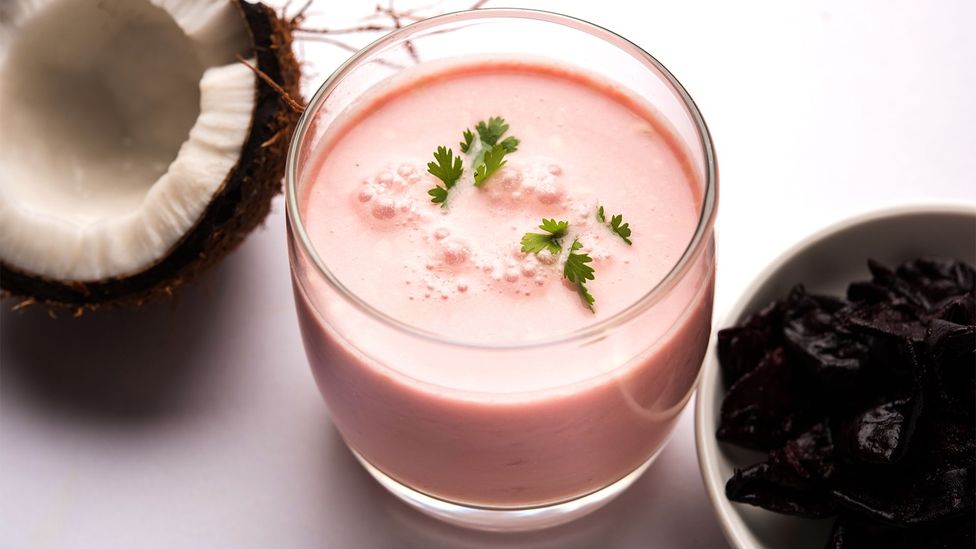
Solkadhi is a rich, pink-coloured beverage that's made by blending kokum extract and coconut milk (Credit: subodhsathe/Getty Images)
Chef Nishant Choubey of Satvik Restaurant in New Delhi first came across this unique condiment during his training stint in Maharashtra. "I like to use ingredients which are less popular outside the local region. Kokum is one such ingredient," he said. "One can do so much from kokum, from starters to soups, desserts and salads. This is an amazing, versatile fruit with a very different sourness than tamarind. I have tried it for different contemporary [foods] like filo-pastry stuffing, jelly, popsicle, granita and mousse-like bhapa doi (a steamed, sweetened yogurt) dessert."
Some cooks are also popularising kokum outside of India. US-based Nandita Godbole, the author of the recently released Masaleydaar: Classic Indian Spice Blends and six other books on the culinary secrets of Indian cuisine, often uses the ingredient in her cooking and stocks up on kokum syrup from Indian stores in her city of Atlanta. Her version of a kokum cocktail is a burst of flavours with peaches, coconut mezcal and lemon coming together.
"I feel that kokum shines best in the drinks because of its unusual sweet-sour flavour, which is very inviting," she said.
With its unique flavour – and naturally cooling and hydrating properties – kokum might have caught the fancy of chefs and cookbook authors at just the right time. As temperatures across the planet continue to rise, the traditional Indian fruit extract might be the next best thing for providing a little respite from the scorching heat.
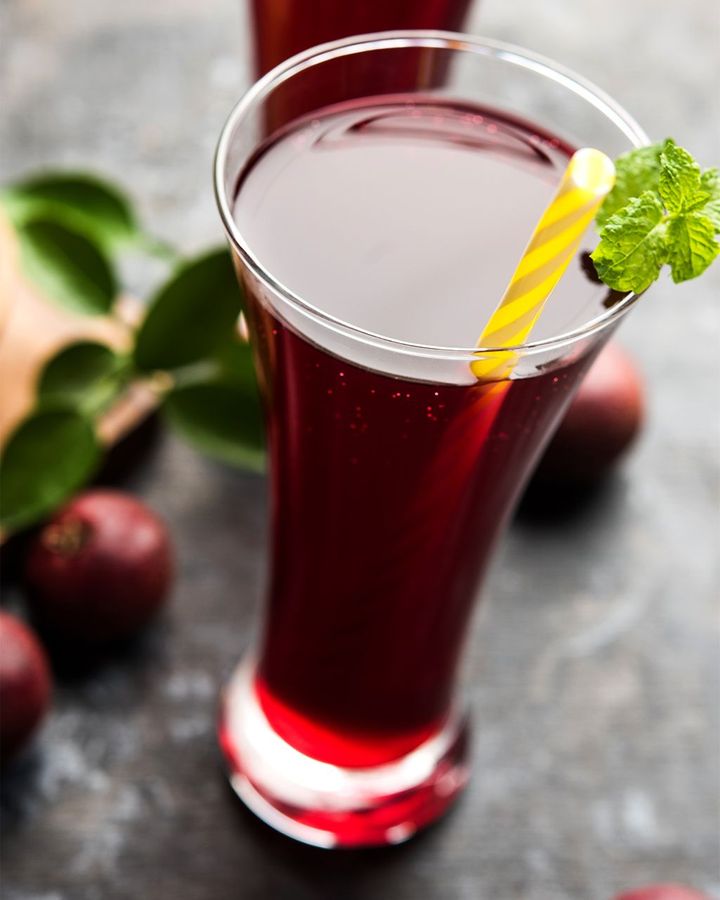
Kokum extract makes for an electrolyte-balancing drink such as kokum sherbet (Credit: subodhsathe/Getty Images)
Kokum sherbet recipe
By Chef Deepa Awchat
Makes 16-18 servings
Ingredients
200g kokum rinds
300g/1½ cups sugar
1 tsp cumin powder
1 tsp cardamom powder
salt to taste
Method
Step 1
Soak the kokum in 4 cups of water for 30 minutes, until soft. Strain and reserve the water. Mash or cut the kokum into tiny pieces.
Step 2
Place the kokum pieces, sugar, cumin, cardamom and salt in a saucepan and cook over low heat for about 5 minutes, until the sugar melts. Add the reserved kokum water, bring to a boil and cook for another 3 minutes. Remove from the heat and let cool. Once cooled, strain the mixture and store in a refrigerator. Discard the kokum pieces.
Step 3
For one glass of kokum sherbet, spoon 3 tbsp of kokum concentrate into a glass, top with 220ml to 240ml cold water and mix with a spoon.
The kokum concentrate can be kept in the refrigerator for three to four days.
Note
Prepared kokum concentrate/syrup (available online and at Indian markets) can be diluted to make kokum sherbet instead of making a concentrate with the rinds.
---
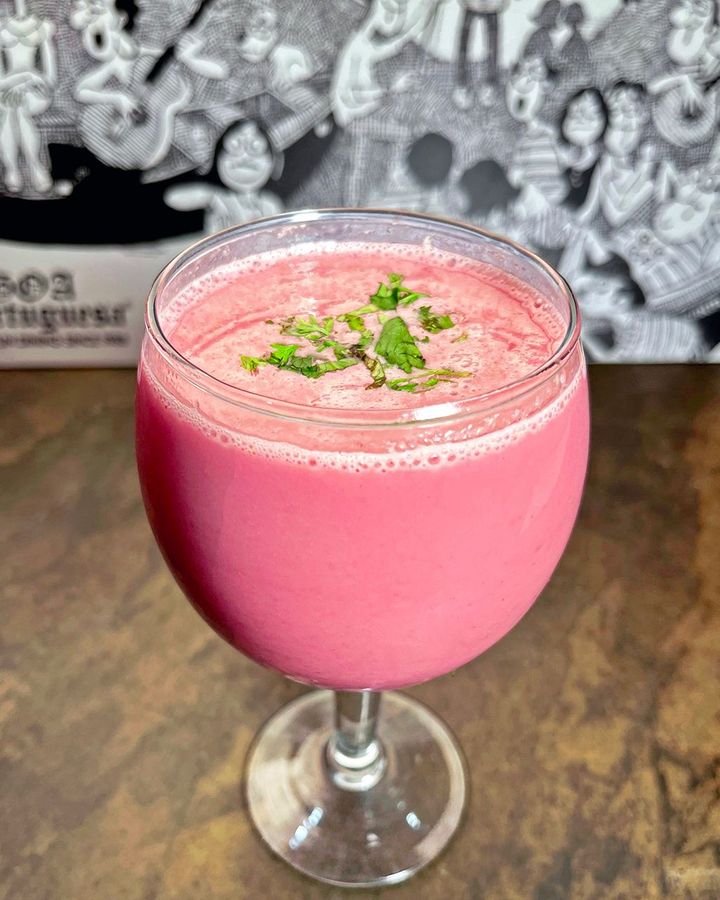
Deepa Awchat's solkadhi uses cardamom, cumin and salt to taste (Credit: Deepa Awchat)
Solkadi recipe
By Deepa Awchat
Serves 4
Ingredients
20 kokum rinds
4 cups coconut milk
12 garlic cloves
4 green chillies
12 black peppercorns
pinch of salt
2 tbsp chopped coriander, for serving
Method
Step 1
Soak the dry kokum rinds in 1 cup of water for 20 minutes.
Step 2
In a blender, blend the coconut milk, garlic, chillies, peppercorns and pinch of salt until smooth. Strain and set aside.
Step 3
Squeeze the soaked kokum into a bowl to extract the juice; discard the rinds. Stir in the coconut milk mixture and let cool in the refrigerator. To serve, sprinkle with chopped coriander.
Note
Prepared kokum concentrate/syrup (available online and at Indian markets) can be diluted to make kokum sherbet instead of making a concentrate with the rinds.
BBC.com's World's Table "smashes the kitchen ceiling" by changing the way the world thinks about food, through the past, present and future.
---
Join more than three million BBC Travel fans by liking us on Facebook, or follow us on Twitter and Instagram.
If you liked this story, sign up for the weekly bbc.com features newsletter called "The Essential List". A handpicked selection of stories from BBC Future, Culture, Worklife and Travel, delivered to your inbox every Friday.
"fruit" - Google News
August 03, 2023 at 03:56AM
https://ift.tt/qPtc7Yp
Kokum: India's naturally cooling fruit juice - BBC
"fruit" - Google News
https://ift.tt/BC8PHYp
https://ift.tt/cRIqTzp
Bagikan Berita Ini















0 Response to "Kokum: India's naturally cooling fruit juice - BBC"
Post a Comment